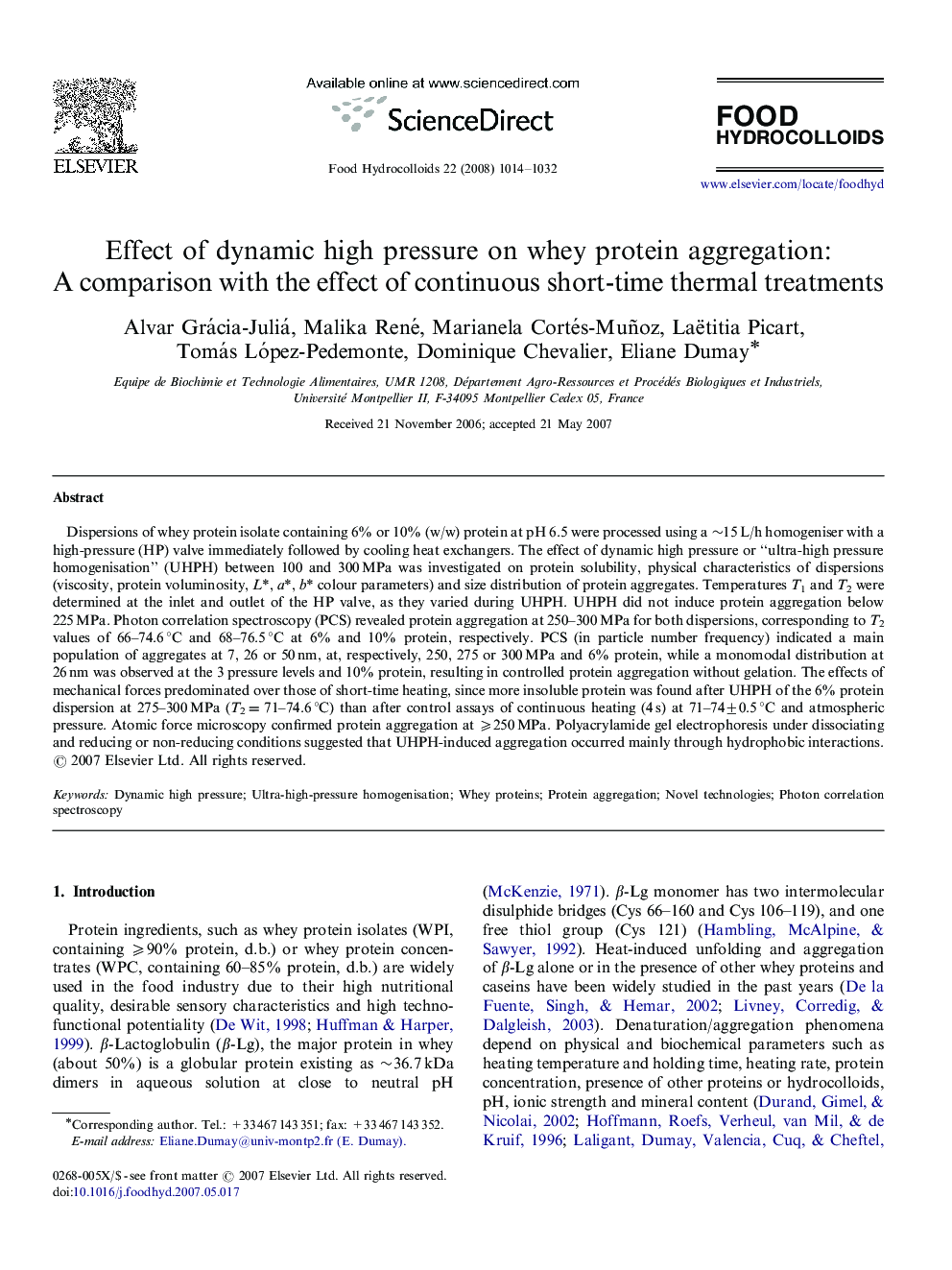| Article ID | Journal | Published Year | Pages | File Type |
|---|---|---|---|---|
| 605267 | Food Hydrocolloids | 2008 | 19 Pages |
Dispersions of whey protein isolate containing 6% or 10% (w/w) protein at pH 6.5 were processed using a ∼15 L/h homogeniser with a high-pressure (HP) valve immediately followed by cooling heat exchangers. The effect of dynamic high pressure or “ultra-high pressure homogenisation” (UHPH) between 100 and 300 MPa was investigated on protein solubility, physical characteristics of dispersions (viscosity, protein voluminosity, L*, a*, b* colour parameters) and size distribution of protein aggregates. Temperatures T1 and T2 were determined at the inlet and outlet of the HP valve, as they varied during UHPH. UHPH did not induce protein aggregation below 225 MPa. Photon correlation spectroscopy (PCS) revealed protein aggregation at 250–300 MPa for both dispersions, corresponding to T2 values of 66–74.6 °C and 68–76.5 °C at 6% and 10% protein, respectively. PCS (in particle number frequency) indicated a main population of aggregates at 7, 26 or 50 nm, at, respectively, 250, 275 or 300 MPa and 6% protein, while a monomodal distribution at 26 nm was observed at the 3 pressure levels and 10% protein, resulting in controlled protein aggregation without gelation. The effects of mechanical forces predominated over those of short-time heating, since more insoluble protein was found after UHPH of the 6% protein dispersion at 275–300 MPa (T2=71–74.6 °C) than after control assays of continuous heating (4 s) at 71–74±0.5 °C and atmospheric pressure. Atomic force microscopy confirmed protein aggregation at ⩾250 MPa. Polyacrylamide gel electrophoresis under dissociating and reducing or non-reducing conditions suggested that UHPH-induced aggregation occurred mainly through hydrophobic interactions.
